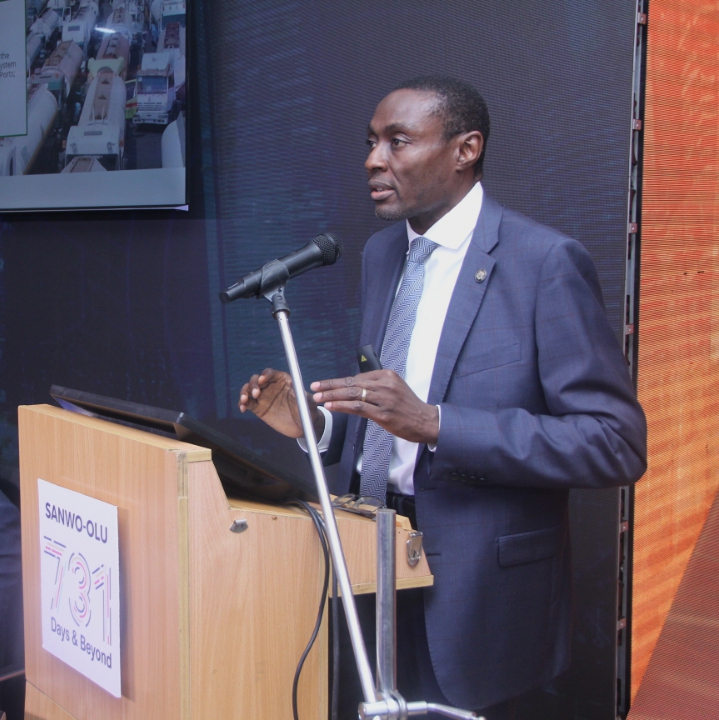Lagos rehabilitates 28 roundabouts, completes 100km of roads within 2 years, says Transport Commissioner
Ayodele Olalere
Lagos State Commissioner for Transportation, Dr Frederic Oladeinde has said the state government completed the rehabilitation of 28 roundabouts, as well as over 100km of roads within two years of Governor Babajide Sanwo-Olu’s administration.
Oladeinde made the disclosure on Tuesday during the Ministerial Briefing to mark the two-year anniversary of Sanwo-Olu’s administration.
According to him, as soon as Sanwo-Olu’s administration came on board, findings revealed one of the reasons for was numerous roundabouts which hindered the free flow of traffic.
He added 60 roundabouts were identified and marked for rehabilitation, out of which 28 were completed within the two years to reduce traffic congestion in the state.
He said that rehabilitation of 22 Junctions was ongoing while 10 Junctions were at the concept stage for improvement.
The Commissioner said other achievements of the Ministry include the acquisition of 31 hectares of land for the Bola Ahmed Tinubu’s truck pack to commemorate the eight truck parking in collaboration with the Management of the Nigerian Ports Authority (NPA), which would be hand over to concessioner after completion.
He said that the government also set up Apapa Special Traffic Management and Compliance Enforcement Team headed by the Special Adviser to Governor on Transportation, with the aim of restoring sanity and socio-economic prosperity to Apapa and it environs.
“Efficient Traffic Management and Transportation have remained crucial to achieving success in the T.H.E.M.E.S Six pillar development agenda of the administration of Mr Babajide Sanwo-Olu.
“To achieve a safe, reliable, effective, and efficient Integrated Multi-Modal Transportation System for an emerging Smart City of over 22 million people, it is expected that a lot of reforms in the transport sector will be required to meet up with some emerging challenges.
“This is why priority is being accorded to the renewal of transportation infrastructure presently at various stages of completion across the state.
”From the take-off of this administration two years ago, May 2019–May 2021, the Lagos State Government has added the following to its scorecard in the transport sector according to the mandate of the Ministry.
”Reduction of traffic congestion by resolving key gridlock points and maintenance of all road infrastructure, furniture, and signalization all year round.
”Decongestion of traffic by connecting more communities with new link roads and bridges and provision of intelligent transport systems to optimize the transport network,” he said.
Oladeinde said that the government is investing in the use of alternative modes of transportation such as rail and waterways apart from road.
He said that the government had accelerated and implemented the Multi-Modal Transport System, which integrated rail, eater, and road modes as specified in the Lagos State Strategic Transport Master Plan.
The commissioner said that the ministry had also increased the number of Computerised Vehicle Inspection Centre from 10 to 17, where adequate roadworthy exercises were conducted.
He said that the ministry had also completed over 100 kilometres of Road to improve road safety and enforce road discipline.
Oladeinde said that the state had also completed the construction of Bus Rapid Transit at Oyingbo terminal, Badagry while the number of regulated routes had increased from seven to over 60.
He said that the Lagos State Government had also procured 300 buses for the First and Last Mile Buses (FMLM) initiative for the redeployment of the first phase, which would be launch in May.
The commissioner said that the state had secured funds to complete Blue Line Rail Mass from Mile 2 to Marina which had reached 93 per cent completion.
The Ministry boss said that the ministry had been able to construct and rehabilitate 16 jetties terminals across the state.
Oladeinde, however, said that the listed above reforms were to promote an integrated transport system that would give options to citizens and improve the seamless movement of goods and persons.


